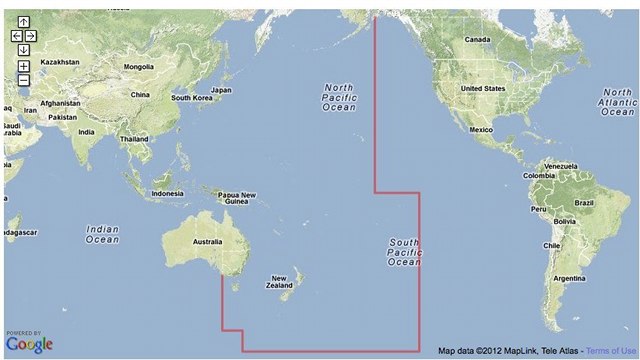SUMMARY
This is AI generated summarization, which may have errors. For context, always refer to the full article.

GENERAL SANTOS CITY, Philippines – The Philippines may now have competition in a pocket of Pacific Ocean high seas that conservationists recently opened exclusively for Filipino tuna fishermen.
This as the delegates of the 27-country members of the Western and Central Pacific Fisheries Commission (WCPFC) failed to reach consensus to closed large areas in the area along the migratory path of tuna and tuna-like species.
The WCPFC, however, was able to get delegates to its 9th regular session in Manila to agree to a 4-month closure of 4 pockets of high seas to purse seine operations and FAD fishing.
The fisheries commission decided late Thursday afternoon, December 6, to open Pocket 1 and 3 other areas in the region to all 27 member countries of WCPFC, subject reportedly to the same limitations and regulations imposed on Filipino tuna fishing fleets.
Jerry Damalerio of Damalerio Fishing based in General Santos City, however, said they still have to receive copies of the full document of the conservation and management measure discussed and approved during the plenary sessions.
He said that until the full texts of the documents are released, they still cannot determine the effects of the WCPFC decision to Filipino tuna catchers.
The WCPCF website has yet to post the results of the Manila meeting, which ended December 6.

Protests
The Philippines was allowed to fish in Pocket 1 High Seas, an area of about 560,000 square miles east of Indonesia and north of Palau starting October following the Guam meeting of WCPFC last March.
Only tuna catcher vessels with a capacity of no more than 250 tons were however allowed and the use of refrigerated transport vessels was prohibited. Philippine tuna catcher vessels are without storage hulls but are complemented with service boats which are fitted with ice-chiller hulls to transport their catches to Philippine ports.
Majority of these catches are landed at the General Santos City Fishing Port complex in southern Mindanao.
The number of Philippine catcher vessels was also limited to 36 catcher boats and a ceiling of 4,659 fishing vessels days.
Several countries have protested the Philippine exemption to the 2-year ban, which took effect in 2010 and was supposed to end in 2011.
The WCPFC extended the ban early this 2012 but give exception to Philippine tuna fishing fleet.
The exemption would have ended in February 2013.
Members of the Parties to the Nauru Agreement (PNA), who are also WCPFC members, have been clamoring for the total closure of these pockets of high seas, while Japan, China and Korea lobbied to open the rich tuna fishing ground.
Several conservationist and environmental groups like Greenpeace, WWF and PEW are also supporting a total ban on all kinds of purse seine operations and longline fishing in the area.
More than 50% of the world’s annual tuna production comes from the western and central region of the Pacific Ocean.
Cuts in catch
The WCPFC also failed to arrive at a consensus to reduce overall bigeye tuna catch of each member countries by 30%.
Only China agreed to a 10% cut. Korea and Japan said they will only reduce their annual catches by 2%.
The Philippine official delegation, represented by Bureau of Fisheries and Aquatic Resources (Bfar) director Asis Perez, was able to have the WCPFC member countries to also accept regional observers to board Filipino fishing vessels under tariffs determined by Philippine fishing authorities.
Filipino tuna catchers have been complaining about the prohibitive US$1,000 per day fee of foreign observers.
Perez also submitted its own 3-year conservation measure to the WCPFC to mitigate the effects of the opening the high seas pockets in the western and central Pacific Ocean.
The 9th WCPFC regular meeting ended Thursday, December 7, after heated debates among member countries, observers and participating territories.
Member countries of WCPFC are Australia, China, Canada, Cook Islands, European Union, Federated States of Micronesia, Fiji, France, Japan, Kiribati, Republic of Korea, Republic of Marshall Islands, Nauru, New Zealand, Niue, Palau, Papua New Guinea, Philippines, Samoa, Solomon Islands, Chinese Taipei, Tonga, Tuvalu, United States of America, Vanuatu.
Participating territories are American Samoa, Commonwealth of the Northern Mariana Islands, French Polynesia, Guam, New Caledonia, Tokelau, Wallis and Futuna while cooperating non-members are Belize, Democratic Peoples Republic of Korea, Ecuador, El Salvador, Indonesia, Mexico, Senegal, St Kitts and Nevis, Panama, Thailand, Vietnam. – Rappler.com
Add a comment
How does this make you feel?
There are no comments yet. Add your comment to start the conversation.